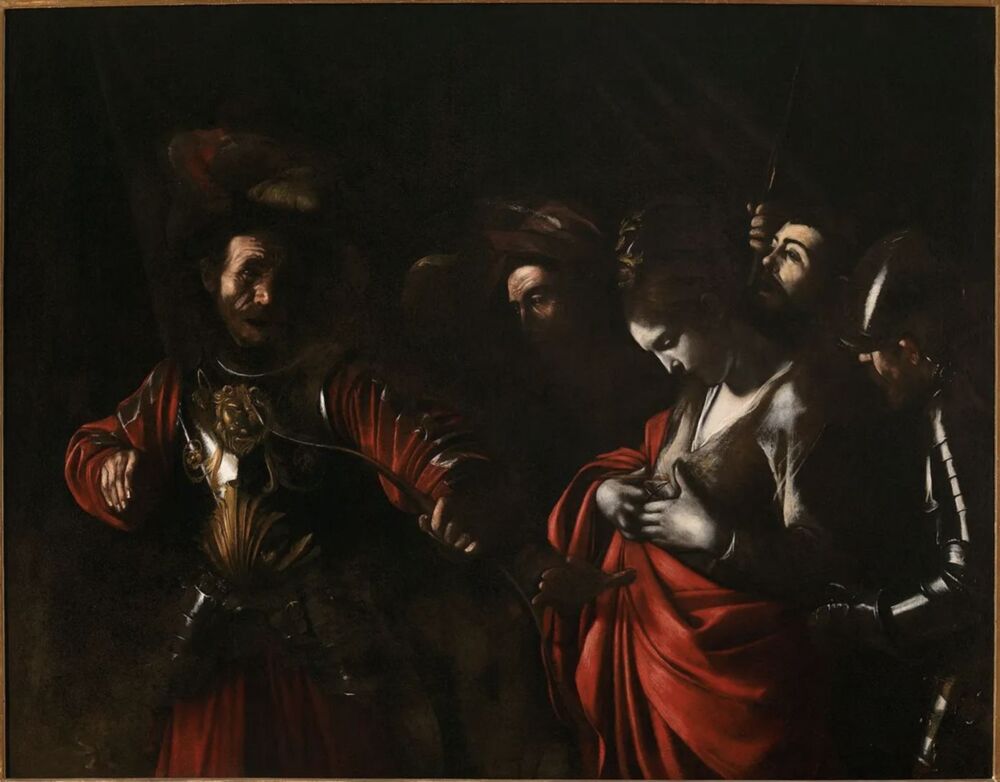I’ve got a bone to pick with you: When you look at a piece of art—whether it’s in your local museum, an exhibition in a gallery, or a print hanging on the wall in a friend’s living room—do you see it? I mean, really see it. Do you take the time to examine the several layers and details of a painting, with each brushstroke telling its own story?
To be honest, I still consider myself a novice in the world of art. I was first introduced to it through school trips to galleries during my teenage years, and over time, visiting galleries became a habit. However, I often found myself just looking at paintings at face value, appreciating them superficially without delving into the intricate pieces of the puzzle the artist intentionally placed in their work. In this blog, I’m going to explore some of my favourite paintings I’ve encountered and what truly makes them special to me. Think of this as a Spotify Wrapped for 2024, but make it art. In no particular order, let’s start with the National Gallery’s ‘The Last Caravaggio’ exhibition from earlier this year, which featured two of Caravaggio’s paintings. I’ll focus on my favourite of the two: ‘The Martyrdom of Saint Ursula’ (c.1610).

The Martyrdom of Saint Ursula (c. 1610)
Just a bit of a back story on this painting: According to the legend of Saint Ursula, she travelled with 11,000 (yes, eleven thousand) virgin handmaidens heading to Rome. They were captured in Cologne by the Huns, who were besieging the city. They slaughtered all 11,000 handmaidens, but the leader of the Huns was enchanted by Ursula’s beauty and modesty. She refused his hand in marriage, ultimately leading him to shoot her with a bow and arrow.
Let’s briefly delve a little bit deeper into this painting. It very much looks like a randomly captured moment in time… you can see the motion of the arrow still impaling Ursula and her blood beginning to spurt out, and her hands caress the wound… her just about realising that she has actually been shot. The shaft of the arrow fading into Ursula. The instant look of regret on the king’s face and a spectator’s hand still reached out in an attempt to stop the king. This is also self portrait of Caravaggio himself as a spectator (looking over Ursula)!!! This is said to be one of the painter’s last paintings, which is eerily fitting as they both had rather untimely deaths.

The Workers’ Dawn (c. 1897)
The next painting that makes it into the top three of the year is The Workers’ Dawn (1897) by Giovanni Sottocornola. It’s really hard to depict the essence of the painting through a digital image. It’s one of those works you have to look at in person. I stumbled across this at the Museo Reina Sofia during a brief FMTY visit to Madrid. This painting encapsulates my point about really looking at a painting to gauge the story it’s trying to tell. At first glance, the scene is dominated by a haziness which softens the figures, making the scene look almost dreamlike. However, when you pause and focus, the veil of mist seems to part, revealing the sombre expressions on the workers’ faces. Their faces, though subtle and understated, carry a quiet weight… full of fatigue, resignation, and maybe you could say a tinge of determination. This contrast between the initial obscurity and the clarity that emerges upon closer inspection mirrors the experience of truly seeing the lives of the working class: often overlooked or blurred into the background, yet profoundly human and present when you take the time to truly look. The haziness definitely represents the early morning fog, a physical manifestation of their routine’s monotony, or even society’s indifference to their plight. Yet, as you focus, the individuals emerge from this mist, reminding us of their humanity amidst the collective struggle.

The Assassination of Saint Peter Martyr (c. 1505-07)
Lastly, the last painting that ranks among my top three is Giovanni Bellini’s ‘The Assassination of Saint Peter Martyr’ (circa 1505-07). This artwork depicts the murder of Dominican inquisitor Peter of Verona and his companion at the hands of their religious opponents. One reason this piece resonates with me is that, despite the cold-blooded nature of the murders, the woodcutters in the background continue with their work. There’s a shepherd casually tending his flock, and the trees are beautiful and evergreen, with sunlight filtering through the leaves. To me, this contrast suggests that life goes on, even in the face of violence.
Bellini was quite subtle with some details, which are easy to overlook. If you look closely at the trees, you can spot some that appear to be bleeding, reflecting the brutality taking place in the foreground. This painting has stayed with me over the past few months because of its stunning scenery juxtaposed with the harrowing act depicted.
To keep this brief, I’d be a fool not to give an honourable mention to ‘The Ambassadors’ by Hans Holbein the Younger. I encourage you to take a look in your own time and let the painting unfold as you notice small details you might have initially missed.
I hope you enjoyed this blog as much as I enjoyed admiring and writing about these paintings (a nice change from research papers!). Just a brief introduction to your author: I’m Tyra, your good-time companion based in London (and beyond), who enjoys all kinds of dates (including gallery dates) with like-minded gentlemen. You can read more about me here and here. Until next time!
